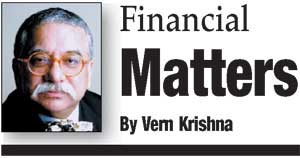Financial analysis assesses the past success and viability of a business to predict the future. We measure success by determining the rate of return to investors and the long-term viability of the enterprise.

Accounting provides the numbers for such analysis. Two key numbers are profits and cash flow.
The two most difficult issues in accounting are timing and valuation. Timing concerns identifying the correct period in which to recognize revenues and expenses. Valuation concerns the proper amount to recognize in the period. To appreciate these two problems we must first dispel the misconception that “profits” and “cash” are synonymous. They are not.
An enterprise measures its profits by matching revenues and expenses based upon principles of accrual accounting. Accrual accounting requires that a business consider as revenues all of its consummated sales, whether for cash or on credit. For example, assume that X Ltd. sells $100,000 of merchandise in December - $20,000 in cash sales and $80,000 on credit. The company will record $100,000 as sales revenue for the month. The sales, however, generate cash inflow for the month of only $20,000.
Similarly, on the expense side, a business will take into account all expenses that it incurs in the period, whether it pays for them in cash or books them as payable in the future. Assume, for example, that X Ltd. incurred expenses of $50,000 for the merchandise that it sold in December - $20,000 in cash and $30,000 on credit. The company will record $50,000 as expenses for the month; cash outflow will be only $20,000.
Thus, X Ltd. will show revenues of $100,000 and expenses of $50,000 - a gross profit of $50,000 - for December. In terms of cash flow, however, it will have taken in $20,000 and paid out $20,000. Hence, its net cash flow for the month is zero.
The mismatch between revenue/cash inflow and expenses/cash outflow may be short or extend over many years. Sales revenue and cash inflow generally may follow each other fairly closely - 30, 60, or 90 days, depending upon the terms of credit that the business gives to its customers. Similarly, the mismatch between expenses and cash outflows for operations may not be long - 30, 60, or 90 days, depending on the terms of credit the business secures from its suppliers.
In other cases, however, the mismatch may endure for decades. For example, assume that X Ltd. purchases a building for $10 million cash. The building has an expected life of 40 years with no salvage value expected at the end. X Ltd. may depreciate the $10-million capital cost of the building over 40 years and allocate, say, $250,000 per year as an expense. Thus, in the first year, it will have $10 million cash outflow, but charge only $250,000 as expenses against revenues. This causes a mismatch in the year of $9.75 million between cash outflows and recorded expenses.
Both numbers, profits and cash flow, are useful, but for entirely different purposes. Accrual accounting produces a fairer and more accurate measure of “net profit” than cash accounting. However, the calculation of net profit using accrual principles is more susceptible to manipulation than the measurement of cash flow.
In the above example, X Ltd. could increase its annual profits by revising its estimate of the useful life of the building to 50 years and charging only $200,000 as annual depreciation expense. Alternatively, it could decrease its profits by estimating useful life as 30 years and allocating $333,333 as depreciation. These changes - which are at best guesstimates - could significantly affect an employee whose bonus depends upon the amount of profit in the bottom line.
There is no compelling correlation between cash flows and net income. Cash flow can increase as net income is falling. Conversely, cash flow can decrease, even be negative, while the business is earning profits in the same period. Hence, premature conclusions from increasing or decreasing cash flows are dangerous.
The important point is to determine the reason that cash flows are increasing or decreasing and to assess the health of the enterprise in its business context.
Declining or increasing cash flow may be good or bad for a business. For example, a business that is expanding rapidly may incur considerable cash outflows to purchase inventory. Even though its sales are increasing, it may not bring in cash at the same rate because customers take 30 to 90 days to pay their accounts. Here, the negative cash flow - which the business must finance from its bank or other lenders - is not necessarily bad if the business ultimately collects its accounts receivable in a timely manner. The mismatch between profits and cash is merely a matter of appropriate financing for the enterprise.
Similarly, a declining business may have good cash flow even as its sales decrease. A business with declining sales may generate a healthy cash flow from collecting its past receivables even though it is not making any current sales. Thus, even as net profits decline, the business will show positive cash flows.
Whether one uses net profit or cash flow analysis depends upon the purpose of the analysis and the decision to be made. Profit analysis looks at the viability of the business in the long run and the rate of return for its investors. Cash flow speaks to the proper financing of the enterprise so that it can remain viable and produce profits.
Vern Krishna is tax counsel with Borden Ladner Gervais LLP, and executive director of the CGA Tax Research Centre at the University of Ottawa. His e-mail is: [email protected]

 Accounting provides the numbers for such analysis. Two key numbers are profits and cash flow.
Accounting provides the numbers for such analysis. Two key numbers are profits and cash flow.